Trivia 71: How Much Do You Know About German Cinema?

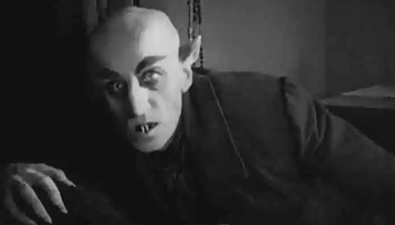
Question 1 |
A | Fritz Lang |
B | F.W. Murnau |
C | G.W. Pabst |
D | Paul Wegener |
E | Robert Wiene |
Answer: C.G.W. Pabst
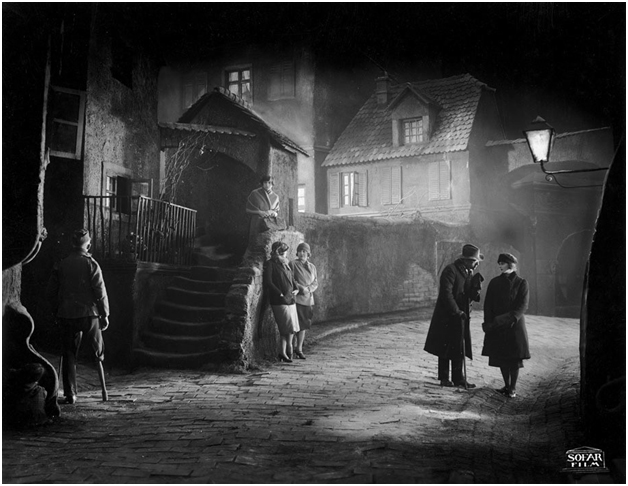
Pabst's 1925 film, "Joyless Street." Photograph courtesy of SOFAR FILM via Wikimedia Commons.
G.W. Pabst (1885 -1967) was an Austrian film director who was a proponent of New Objectivity, a movement in Germany that arose during the 1920s as a reaction against German Film Expressionism. New Objectivity in film was defined as realistic cinematic settings, straightforward camerawork and editing. The movement featured an examination of inanimate objects as a way to interpret characters and events, without overt emotionalism. On the other hand, German Film Expressionism utilized distorted sets, high contrast in light and dark cinematography, stylized expressionistic acting to evoke moods through its visual design.
Pabst's films of the 1920s concentrate on subjects such as abortion, prostitution, labor disputes, homosexuality, and addiction. His 1925 "Joyless Street" is a landmark of the objective style, but he is best known in the film world for "Diary of a Lost Girl" and "Pandora's Box," both made in 1929 and starring Louis Brooks.
POST SCRIPT: Pabst's 1930 pacifist sound film "Westfront 1918" viewed the World War I experience in a bleak, matter-of-fact way, with a clear denunciation of war, and was banned as unsuitable for public viewing. In 1955 he made "The Last Ten Days," the first film in post-World War II Germany to feature the character of Adolf Hitler.
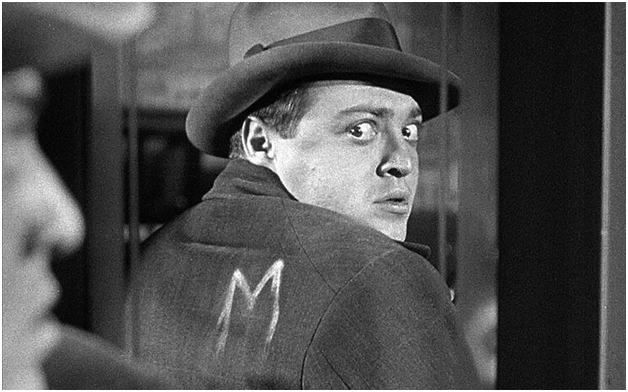
Peter Lorrie as the cinema's first serial killer in Fritz Lang's "M"(1931), the de facto masterpiece of German Expressionist cinema. Photograph courtesy of IMDB.com.
Fritz Lang (1890-1976) was a German-Austrian film director, screenwriter and producer who worked in Germany and later in Hollywood. Perhaps the best-known émigrés from Germany's school of Expressionism, he was dubbed the "Master of Darkness" and considered one of the most influential filmmakers of all time. The T-Boy Society of Film, Travel & Music recently selected Lang's futuristic "Metropolis" (1927), and the film noir precursors, "Dr. Mabuse the Gambler" (1922) and "M" (1931) as the best films from his German period.
POST SCRIPT: After "M" was banned by the Nazi party, Lang saw the writing on the wall, and bailed to Hollywood where he made 22 films, many of which were noirish masterpieces of menace, fear and fate: "The Big Heat" (1953), "You Only Live Once" (1937) and "Scarlet Street" (1945). He also played in himself as an actor in Jean-Luc Godard's French New Wave 1963 masterpiece, "Le Mépris."
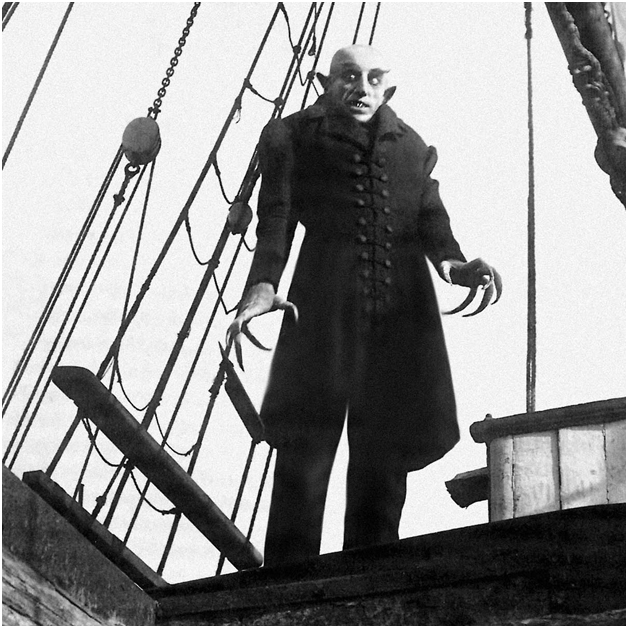
Max Schreckin Murnau's "Nosferatu: A Symphony of Horror" (1922). Photograph courtesy IMDB.com via Wikimedia Commons.
F.W. Murnau (1888-1931) was a German film director, producer and screenwriter. Among his most acclaimed German works is the film, "Nosferatu; A Symphony of Horror" (1922), an adaptation of Bram Stoker's "Dracula," deemed a masterpiece of German Expressionist cinema. The film also served as a forerunner to Film Noir and Hollywood horror films. Later, Murnau directed the film, "The Last Laugh" (1924) - a silent film that was so visually expressive that it did not require a single tile card - as well as a 1926 interpretation of Goethe's "Faust."
Murnau emigrated to Hollywood in 1926, where he made the film, "Sunrise" (1927), renowned for its long tracking shots (unchained camera) and innovative stage design and miniatures. Today, the T-Boy Society of Film, Travel & Music regards it as among the ten best films ever made, and in Sight & Sound's 2012 critics poll "Sunrise" was voted the fifth greatest film of all-time.
POST SCRIPT: Together with documentary film pioneer Robert J. Flaherty, Murnau traveled to Bora Bora to make the film "Tabu" (1931). Flaherty left after "artistic disputes," leaving Murnau to finish the movie on his own. A week before the opening of "Tabu," Murnau died in an automobile accident at the age of 42.
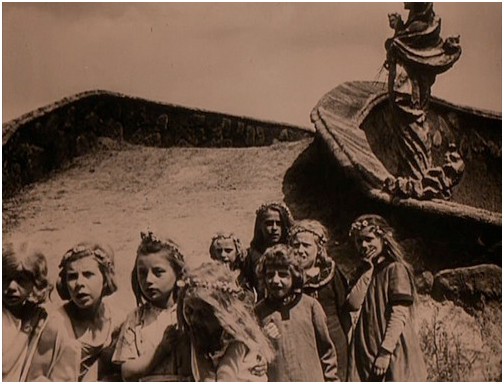
Still from Paul Wegener's 1920's film, "The Golem: How He Came into the World." Photograph courtesy of Tumblr via Wikimedia Commons.
Paul Wegener (1874-1948) was a German actor, writer and film director known for his pioneering role in German Expressionist cinema. "The Golem: How He Came into the World" (1920), stands as one of the classics of German cinema and helped cement Wegener's place in cinematic history.
POST SCRIPT: In 1945, with World War II over and Berlin in ruins, Paul Wegener took initiative as president of an organization intended to improve the living standards for surviving citizens of Berlin. Now in poor health, Wegener collapsed on stage during a theatrical performance in 1948, and died shortly afterwards.
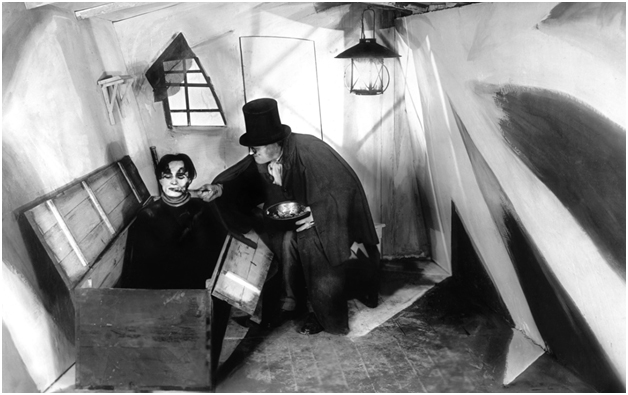
Conrad Veidt (left) and Werner Krauss in "The Cabinet of Dr. Caligari" (1920). Photograph courtesy of Jeff Huston via Wikimedia Commons.
"The Cabinet of Dr. Caligari" (1920) was directed by Robert Wiene (1873-1938) and written by Hans Janowitz and Carl Mayer. The narrative focuses on an insane hypnotist who uses a somnambulist to commit murders. Considered a quintessential work of German Expressionist cinema, the film features a dark and twisted visual style, with sharp-pointed forms, oblique and curving lines, and shadows and streaks of light painted directly onto the sets.
POST SCRIPT: Following the Nazi rise to power in Germany, Wiene, who was of Jewish descent, escaped Nazi persecution by seeking exile in France, where he died and was buried in an unmarked grave in 1938. After World War II, historians re-evaluated his work and attributed the brilliance of "Caligari" to everyone involved except for the him.
Question 2 |
A | Florian Henckel von Donnersmarck |
B | Rainer Werner Fassbinder |
C | Werner Herzog |
D | Volker Schlöndorff |
E | Wim Wenders |
Answer: Florian Henckel von Donnersmarck
The Lives of Others (1984) was directed by Florian Henckel von Donnersmarck in East Berlin, and not part of the New German Cinema film movement.New German Cinema developed in pre-unification West Germany in the late 1960s and early 1970s, marked primarily by the films of Rainer Werner Fassbinder, Werner Herzog, Wim Wenders and Volker Schlöndorff.
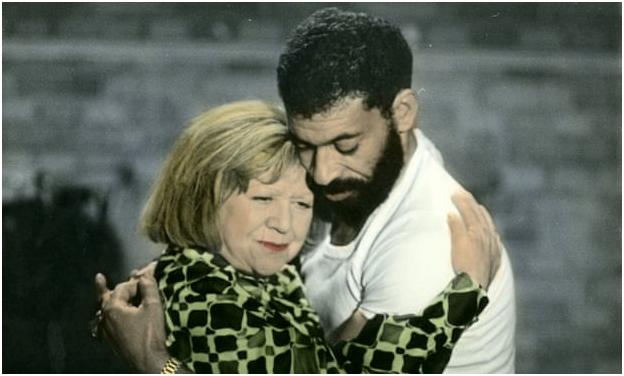
Brigitte Mira as an older cleaning woman and El Hedi ben Salem, a younger Moroccan guest worker, in “Ali: Fear Eats the Soul” (1974). The film is a loose remake of Douglas Sirk’s “All That Heaven Allows” (1955), where Fassbinder assaults the intolerance of 1970’s German society. Photograph courtesy of IMDB.com.
Rainer Werner Fassbinder (1945 –1982) was a West German filmmaker, actor, playwright, theatre director, composer, editor, and defining figure of New German Cinema. His career lasted less than two decades, and yet he was able to complete over 40 feature films, two television series, three short films, four video productions, and 24 plays. Working simultaneously in theater and film, Fassbinder created his own visual style from a fusion of the two art forms. Influenced by Jean-Luc Godard, Jean-Marie Straub, Douglas Sirk and the theories of Bertolt Brecht, he achieved success on the arthouse circuit with “The Bitter Tears of Petra von Kant” (1972), “The Merchant of Four Seasons” (1972) and “Ali: Fear Eats the Soul” (1974), considered masterpieces by the T-Boy Society of Film, Travel & Music. Later, films such as “The Marriage of Maria Brum,” (1979), “Lili Marleen” (1981) and the 14 episode German TV mini-series, “Berlin Alexanderplatz” (1980), based on Alfred Döblin's novel, would lead to greater international exposure for Fassbinder.
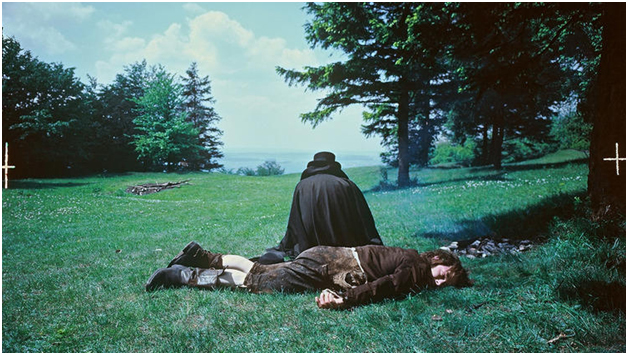
Bruno S as Kaspar Hauser, a man who appeared in the town square of Nuremberg in 1828 unable to speak and clutching a mysterious letter containing his name. Photograph from "The Enigma of Kaspar Hauser" (1974) courtesy of Werner Herzog.
Werner Herzog (born in 1942) is a West German film director, screenwriter, author, actor, and opera director, regarded as a pioneer of New German Cinema. Hailed by some as a primitive, others a visionary; he studied history, theater and literature, but as a film director is self-taught. To see the first tracking shot in "The Enigma of Kaspar Hauser" (1974) is akin to witnessing the advent of first tracking shot in film history. His visual themes often feature individuals in conflict with nature, and he is known for his unique filmmaking process with a disregard of storyboards, emphasizing improvisation, and placing the cast into similar situations as the characters in his films. Along with "The Enigma of Kaspar Hauser," the T-Boy Society of Film, Travel & Music notes "Aguirre, the Wrath of God" (1972) and "Stroszek" (1977) as his three best films.
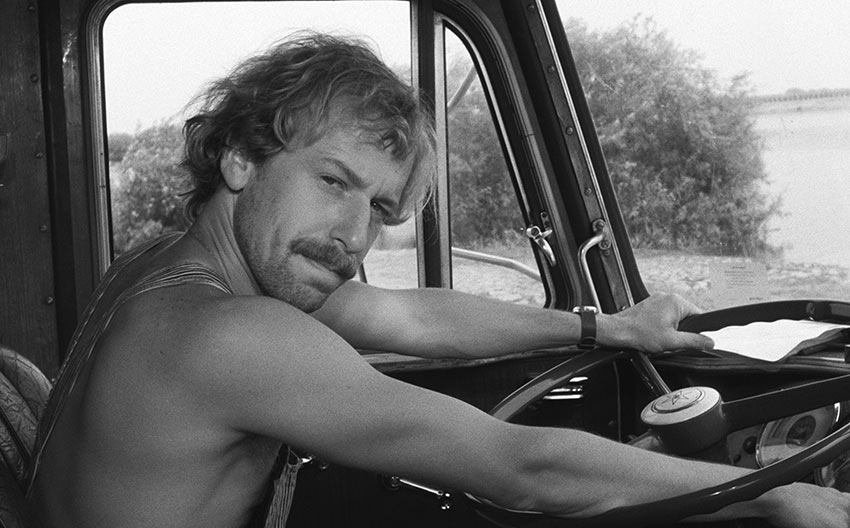
Wim Wenders' "Kings of the Road" (1976) is about a movie projector mechanic (Wenders' regular, Rüdiger Vogler), traveling the lonely backroads of pre-reunification West Germany to dilapidated movie theaters. Production still courtesy of IMDB.com.
Wim Wenders (born 1945) is a West German filmmaker, playwright and author. A major figure in New German Cinema, Wenders was highly educated by Hollywood films and Americana, and is considered the ultimate director in film homage. His influences ranged from Yasujirō Ozu and John Ford to Nicholas Ray and Anthony Mann. The cast of "The American Friend" (1979) featured the directors, Dennis Hopper, Gérard Blain, Sam Fuller, Nicholas Ray, and Jean Eustache playing gangsters, and the film received international acclaim and brought him to Hollywood. Much of the distinctive cinematography in his films stem from his long collaboration with Dutch cinematographer Robby Müller. T-Boy Society of Film, Travel & Music selected "Alice in the Cities" (1974), "Kings of the Road" (1976) and "The American Friend" as his three most compelling films.
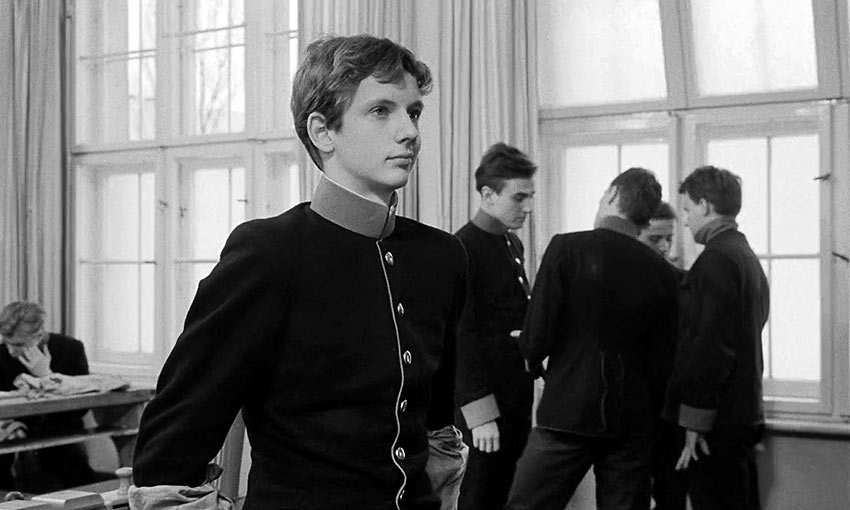
"Young Törless" (1966) features Mathieu Carrièreas Törless, an aloof, sensitive young aristocrat in a sadistic boarding school. Production still courtesy of IMDB.com.
Volker Schlöndorff (born 1939) is a German filmmaker who has worked in Germany, France and the United States. An early member of New German Cinema in the late 1960s and early 1970s, he helped lead the movement with "Young Törless" (1966), but was considered more a stylist than a genuine auteur. The 1975 art house hit, "The Lost Honor of Katharina Blum" (co-directed by wife and actress, Margarethe von Trotta (1975) followed by "The Tin Drum" (1979), based on novel by Günter Grass, nabbed an Academy Award for Best Foreign Language Film in 1980. "Young Törless" (1966), "The Lost Honor of Katharina Blum" and "Circle of Deceit" (1981) topped the T-Boy Society of Film, Travel & Music's list for his finest films. Visit Walt Mundkowsy's Young Törless - A Look Back.
Question 3 |
A | Louise Brooks |
B | Marlene Dietrich |
C | Greta Garbo |
D | Diane Kruger |
E | Elke Sommer |
Answer: Louise Brooks
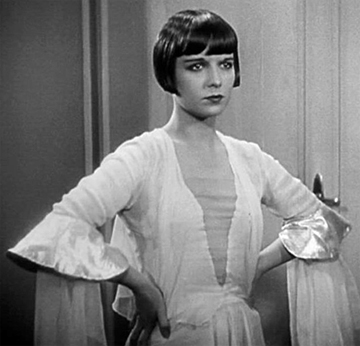
Production still of Louis Brooks in G.W. Pabst's 1929 film, “Pandora's Box." Photograph courtesy of IMDB.com via Wikimedia Commons.
Born 1906 in Cherryvale, Kansas, Louise Brooks was a legendary actress of the silent film era. She epitomized the flapper age with her bobbed hairstyle, while blatantly flaunting her disdain of accepted sexual and societal roles of women at the time. Her performances in Howard Hawks’ “A Girl in Every Port” and William Wellman’s “Beggars of Life,” both made in 1928, illustrated to the public that she was a fresh, natural and unique talent. Due to her disdain of the mediocracy of the Hollywood studio system, she bailed for Germany where she became world-famous for her starring roles in G.W. Pabst's 1929 films, “Pandora's Box" and "Diary of a Lost Girl.”
ADULTS ONLY: Click HERE to view Louise Brooks in a nude photographic display.
After receiving film roles back in the states, she gave Hollywood another shot, but quit acting in 1938 at the age of 32. She spent most of her post-acting career, reading, painting, giving lessons at her dance studio, and later as an accomplished writer, authoring a number of books, including her autobiography, “Lulu in Hollywood.” Like some of her film characters, she also became a real-life modern courtesan for wealthy men, a call girl and a manipulative femme fatale. William S. Paley, the founder of CBS, provided a small monthly stipend to Brooks for the remainder of her life, which kept her from committing suicide at one point. Louise Brooks died in obscurity of a heart attack in Rochester, New York when was 78 years old. Cinephiles, such as Henri Langlois, Molly Haskell and Robert Ebert, rate her higher than Garbo and Dietrich, due to her natural, underplaying on film.
Question 4 |
A | Fritz Lang |
B | Ernst Lubitsch |
C | Otto Preminger |
D | Douglas Sirk |
E | Billy Wilder |
Answer: Ernst Lubitsch.
Lubitsch left Germany for Hollywood in 1922, when he was contracted as a director by Mary Pickford to film “Rosita.”
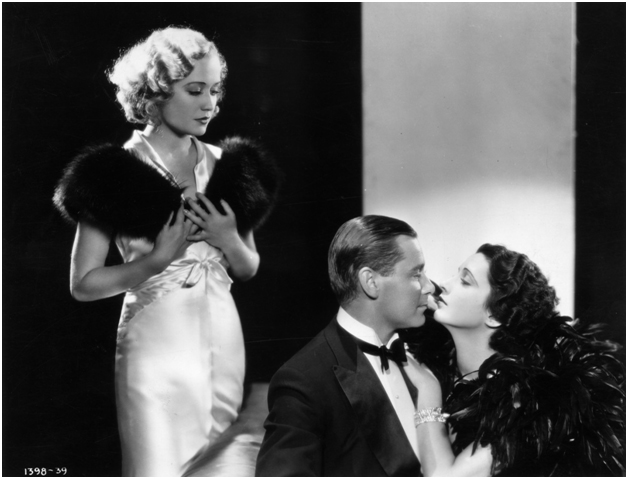
Production still from Lubitsch’s “Trouble in Paradise” (1932) with Miriam Hopkins on left, Herbert Marshall and Kay Francis. Photograph courtesy of IMDB.com via Paramount Pictures.
Ernst Lubitsch (1892–1947) was a German and Hollywood film director, producer, writer and actor. His urbane comedies gave him the reputation of being Hollywood's most elegant and sophisticated director. Among his best known works are Trouble in Paradise (1932), Ninotchka (1939) and The Shop Around the Corner (1940) - T-Boy Society of Film, Travel & Music.
Lubitsch was perhaps the most successful of all the European talent imported by Hollywood. He had quickly developed the recognizable style of romantic comedy which came to be named after him, the pointed and patented “Lubitsch Touch,” and was widely recognized by audiences and adored by critics. One major reason for the ease of Lubitsch’s transition from Germany to America, and from silents to sound, was the carefully programmed way he approached the production of his films, [creating] a blueprint for a film that was followed on the set with the precision of a great master craftsman. Perhaps only Hitchcock approached the degree of pre-planning practiced by Lubitsch. - Film historian Richard Koszarski, in “Hollywood Directors: 1914-1940.”
Question 5 |
A | Fata Morgana |
B | Hitler: The Wrath of God |
C | Nosferatu: Birth of the Third Reich |
D | Olympia |
E | Triumph of the Will |
Answer: Olympia
“Olympia” is a 1938 German documentary, written, directed and produced by Leni Riefenstahl, which documented the 1936 Summer Olympics, held in the Olympic Stadium in Berlin during the Nazi period.
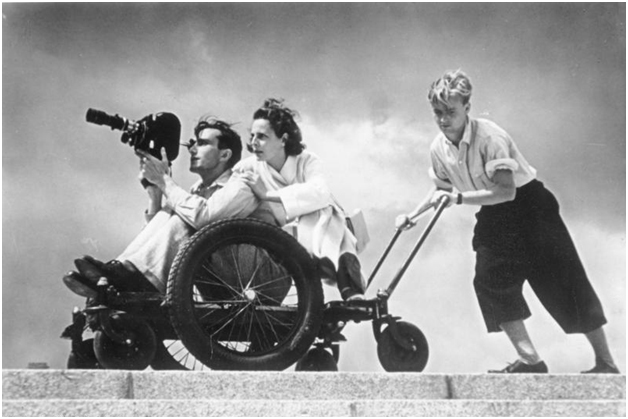
Leni Riefenstahl, camera operator and production assistant shooting “Olympia” (1938), held in the Olympic Stadium in Berlin. Photograph courtesy of IMDB.com via Wikimedia Commons.
Leni Riefenstahl (1902-2003) was known for her beauty on the screen, athleticism and, most importantly, her seminal role in producing Nazi propaganda. This included the earlier documentary, “Triumph of the Will” (released in 1935) which became a major example of film used as propaganda. Riefenstahl's techniques—such as moving cameras, aerial photography, the use of long-focus lenses to create a distorted perspective, and the revolutionary approach to the use of music and cinematography—have earned “Triumph of the Will” recognition as one of the greatest use of form (not literary content) in a documentary propaganda.
